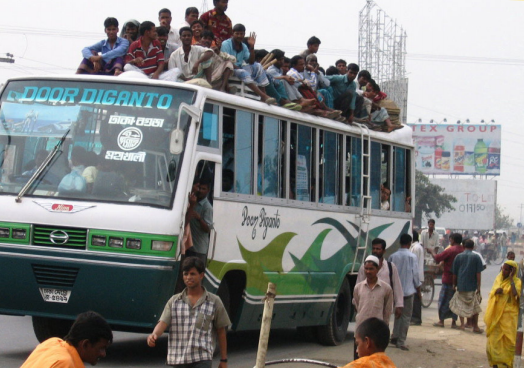LEDS in Practice: Fight poverty by reducing greenhouse gas emissions from urban transport

Introduction
Low Emissions Development Strategies (LEDS) are central to the efforts of developed and developing countries to mitigate current and future greenhouse gas emissions, which if unchecked will accelerate climatic change and further exacerbate existing vulnerabilities, and thereby undermine efforts to adapt to climate change.
As a result of various push-pull factors, including impacts relating to climate change, migration from rural to urban settings (urbanisation) is increasing. This is increasingly exerting pressure on the capacity of cities, requiring interventions in order to maintain the health and security of their growing populations. In parallel to this, economic growth in developing and developed countries alike is resulting in an increased need for, and dependence on, public and private transport. This presents both a challenge and opportunity for cities to mitigate increasing air pollution and carbon emissions. In response to this the Transport Working Group at Low Emission Development Strategies Global Partnership (LEDS GP) has released a series of papers exploring the many benefits of low carbon urban transport (see links under further resources), of which this is one.
Fight poverty
Today over 540 million people worldwide live in multidimensional poverty. These people not only lack financial resources, but also suffer from limited access to social institutions and face obstacles to earning a livelihood, increasing their vulnerability to external stressors. Low carbon transport is critical to reduce poverty in cities and ensure a sustainable future for all. Car oriented urban development and other traditional forms of transport, deemed to connect the poor with more economic and social opportunities, have not been significantly successful.
Low carbon transport infrastructure brings a paradigm shift in traditional urban development and transportation planning—one that pursues principles of sustainable development of equitable, environmentally friendly, and economically viable transformation for investors and decision makers as well as the community of users. Shifting to low carbon transport, as opposed to just increasing the supply of public transport, brings more sustainable benefits for the poverty afflicted population than motorized solutions. The ‘avoid and shift’ mechanism uplifts the poor while using the transport sector to prevent a 2°C warmer world (see full text*). Low carbon transport avoids motorized transport and brings a shift to increased public transport integrated with mixed land use and a better infrastructure for walking and cycling, which provides for increased mobility and accessibility.
This paper*shares two case studies from cities that have taken action in the transport sector to fight poverty and have realized the benefits of reduced emissions from traditional public transport options. It describes the ‘BRT-Lite’ bus rapid transit system of Lagos, Nigeria and the Metrocable system in Medellín, Colombia and provides details of the design, implementation and the results of these projects to date.
*download from the right-hand column or via the link under further resources.
Key Messages
- Poor households benefit greatly from low carbon transport options.
- More affordable, efficient, and safe travel connects people to more employment and social opportunities.
- Low carbon transport in combination with pro-poor city development can improve the inclusion of poor and marginalized neighborhoods.
- As well as lifting people above the poverty line, these solutions boost local economies, with additional long term advantages from carbon emission savings for the local regions.
- Thus low carbon transport solutions pay multiple dividends resulting in poverty alleviation— they are affordable and climate friendly investment options for city governments that address both transport related poverty issues and climate change mitigation.
LEDS in Practice
This paper is one of a series on the co-benefits of low emission development strategies in the transport sector, from the LEDS GP Transport Working Group, World Resources Institute’s Ross Center for Sustainable Cities (EMBARQ) and GIZ. View the others here:
- LEDS in Practice: Make roads safe
- LEDS in Practice: Breathe clean
- LEDS in Practice: Save money and time
- LEDS in Practice: Create jobs
The LEDS GP Transport Working Group provides technical assistance, tools, and training for LEDS in transport systems. The group works to:
- share approaches and practices for transport and land use planning n provide transport analysis methods and tools
- offer peer to peer, transport-specific financial training and expert assistance.
Contact: [email protected]
Suggested Citation
Lefevre, B., Eisenbeiß, K., Yadav, N. and Enriquez, A. (2016) Fight poverty by reducing greenhouse gas emissions from urban transport. LEDS in Practice. Low Emission Development Strategies Global Partnership.
(0) Comments
There is no content